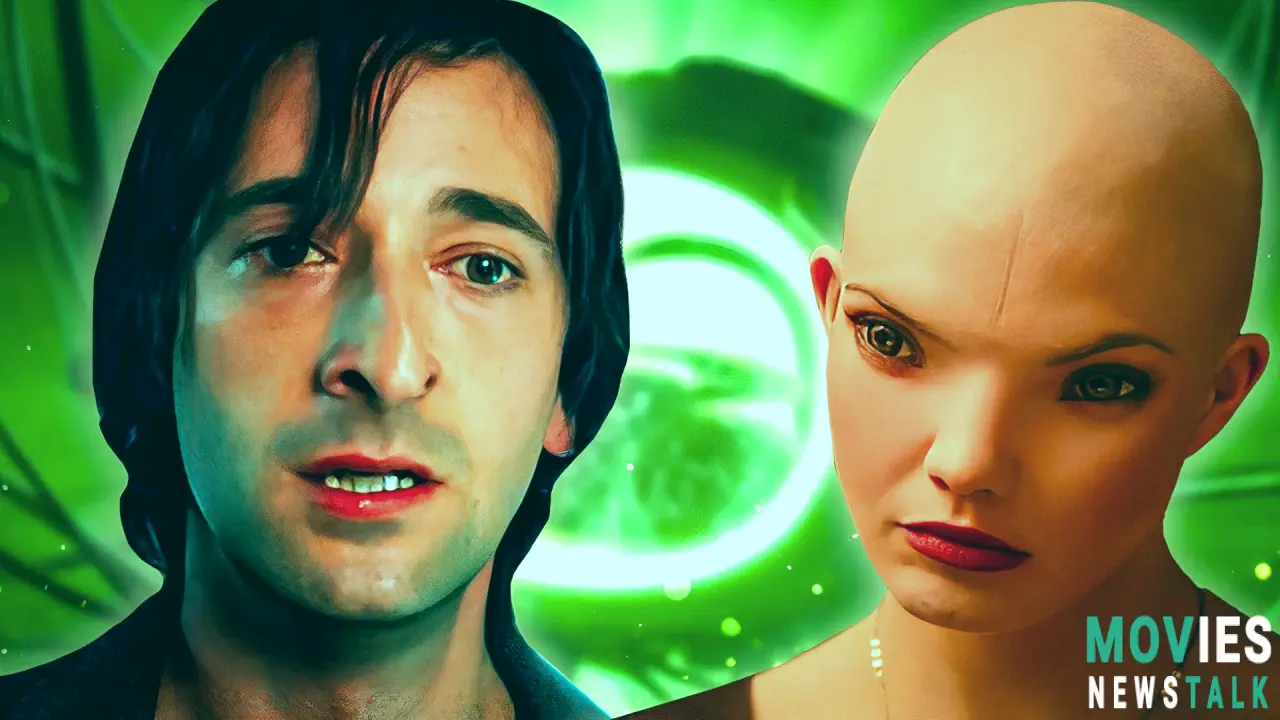Dren's Transformation In Splice Explained
Dren's transformation in the third act of Splice may have been set up earlier in the film, but it still comes as a harrowing and horrifying turn for the film to make as it approaches the film's haunting ending. Splice's creature Dren was initially biologically a female. Raised as something of a "child" of the two scientists who created her, Dren seemingly died due to internal instability and the external abuse of her creators. In reality, Dren was going through a physical transformation from female to male.
This "death" was similar to how their test creature Ginger had biologically shifted from female to male, due to a major shift in the animals' hormones. The two entities shared a hodgepodge of DNA from various animals, teasing how Dren eventually go through the same change. In both cases, the newly male creature perceives others as potential threats and quickly goes on the offensive. For Ginger and Fred, the damage was just to them and the reputations of Clive and Elsa. In Dren's case though, their larger body and more dangerous attributes mean that there is far more collateral damage.
How Dren's Rampage In Splice Reinforces The Movie's Core Message
One of the core themes of Splice is the dangers of science when unrestrained by questions of morality. Following in the footsteps of other classic sci-fi horrors like Frankenstein, Splice is focused on how human flaws cause attempts to scientifically attain perfection inherently impossible, often to disastrous results. In Splice, that comes in the form of Dren's final form, with the initially female Dren evolving into a more dangerous male form. This is only amplified by the abuses and failures of Elsa and Clive as parents, turning Dren from a creature into a monster.
Lashing out at Clive and Elsa, Dren ends up killing the former (as well as their employer William Barlow and Clive's brother Gavin). The male Dren then assaults Elsa, after which Elsa is able to surprise and kill Dren. Since the beginning of Splice, the moral quandaries inherent to the film's plot were presented to Elsa and Clive as reasons to be cautious with their ambitions. However, their decisions to ignore these warnings (and ultimately their own flaws) helped create Dren in the first place, as well as the circumstances by which Dren could become a threat.
Elsa's Tragic Fate Explained
The ending of Splice sees Elsa dealing with the secretive aftermath of her actions. Technically, Elsa and Clive's initial pursuit of new proteins and chemicals through biological experimentation was a success. Dren's body is discovered to possess a number of unique and potentially world-changing scientific advancements. Barlow's business partner Joan Chorot helps cover up the events of Dren's rampage and her company retains the patents on them. Elsa also remains in Chorot's employ, as it turns out she was impregnated during the assault and intends to help Chorot carry their experiments to the "next level" despite the danger it poses.
Elsa's fate after Splice is a tragic consequence of her own actions. Her commitment to science may be pushed further than ever, but they've come at the cost of her husband and Dren. Elsa had come to see Dren as her child, and it was only through Elsa's brutal treatment of her that Dren became so vicious. Elsa's final words in the film are to brush aside concerns about carrying Dren's child with a dismissive "what's the worst that could happen," repeating a phrase she uttered before her doomed experiments began that implies she is doomed to repeat her mistakes.
How Splice's Ending Sets Up Potential Sequels
The ending of Splice is open-ended enough to leave plenty of room for expansion into a sequel. Splice ends with Elsa and Chorot looking ahead to the future scientific possibilities brought to life by Dren. A prospective sequel could see Chorlot's company expanding on the unique properties discovered in Dren's body. They could try to replicate the initial creation of Dren under more controlled circumstances, which could highlight the inevitability of man's hubris in the world of science. Advances in technology and over the last fifteen years could introduce new ways to build on Dren's genetics, creating something new.
The most obvious direction for a sequel would be to focus on Elsa and her child. Elsa could try to avoid the mistakes she made with Dren, with a possible narrative focusing on her attempts to improve the experiment in the second attempt. Over a decade has passed since Splice, making for a realistic amount of time to pass for the child to grow into adolescence naturally. A sequel focusing on this child as they grow could be a compelling exploration of the ramifications of experiments taking on a life of their own, and is a thematically fertile subject matter.
The Real Meaning Of Splice's Ending
Splice's ending plays into the film's underlying themes about the dangers of consequences, both when one is messing with the fundamental building blocks of life or trying to raise a new one as a parent. Elsa and Clive were negligent as both scientists and parents, with Elsa being outright abusive towards Dren at times. Perhaps Dren, Fred, and Ginger could have survived their transformations without becoming monsters if the pair had been more attentive. However, their own personal hang-ups and brewing drama led them to ignore their creations.
This is a very relatable human failing, and one that can cause disastrous consequences. In Splice, those consequences happen to be several bodies and a new species growing within the film's sole remaining protagonist. While the scientific potential is there within the world of Splice to do amazing things, humans find a way to infect those advances with their own problems. No matter how far people can go, they're still people — meaning their flaws prevent anything from going necessarily perfectly. It's a classic sci-fi horror theme, and one that Splice brings to vivid (and terrifying) light.

